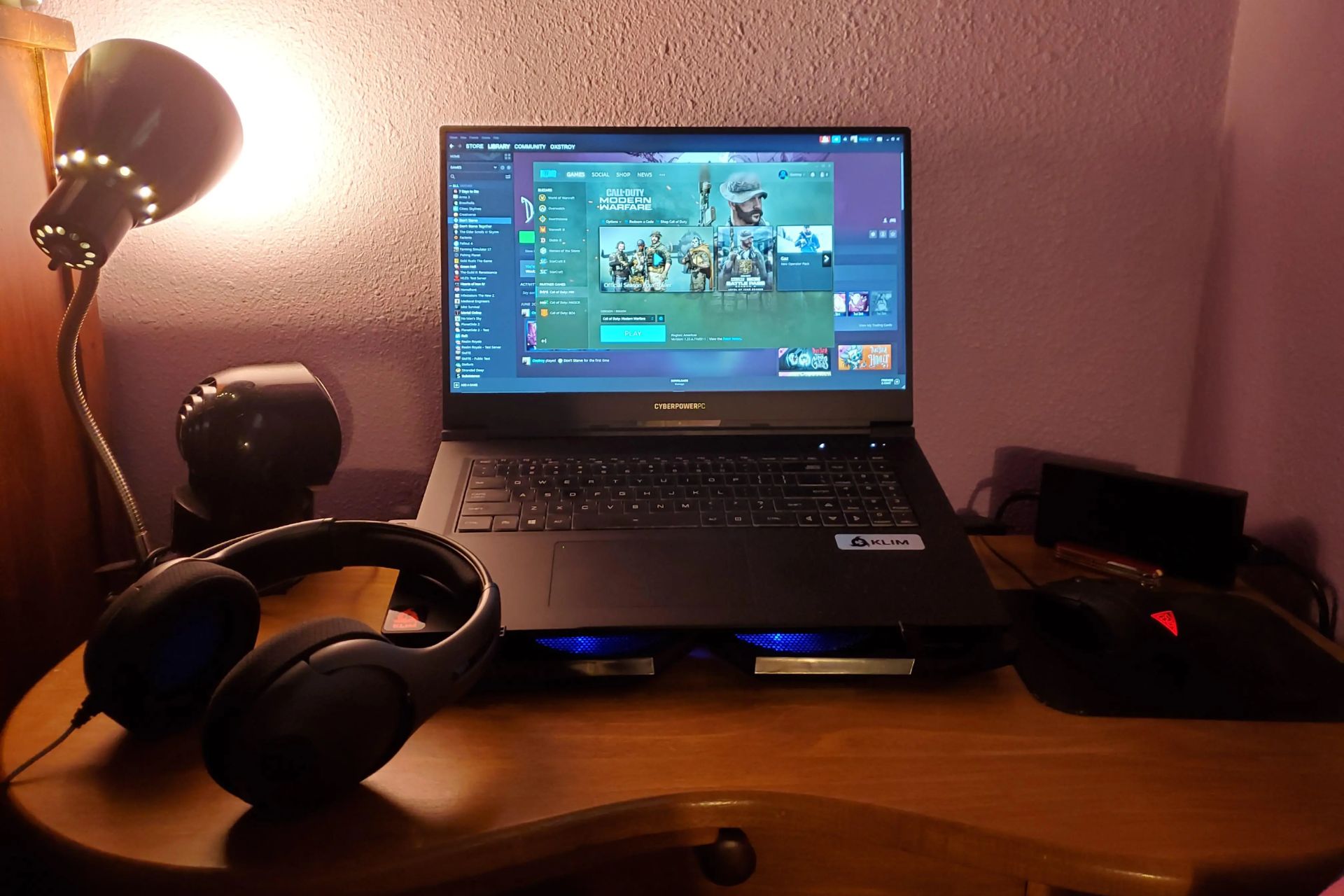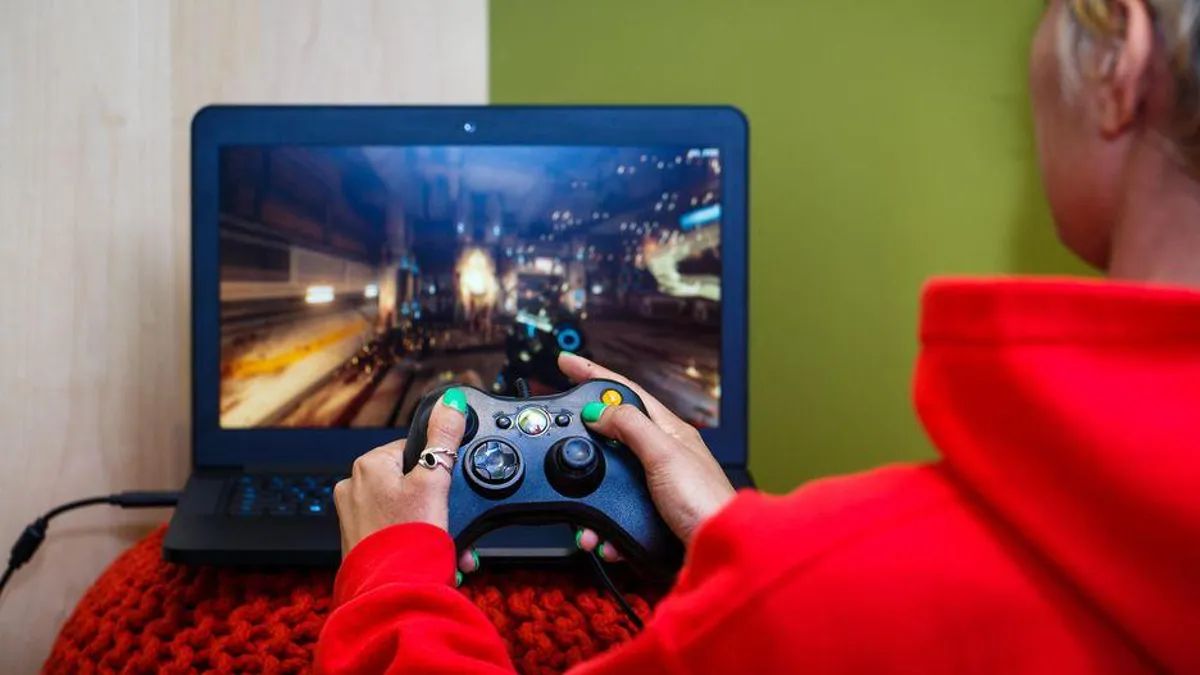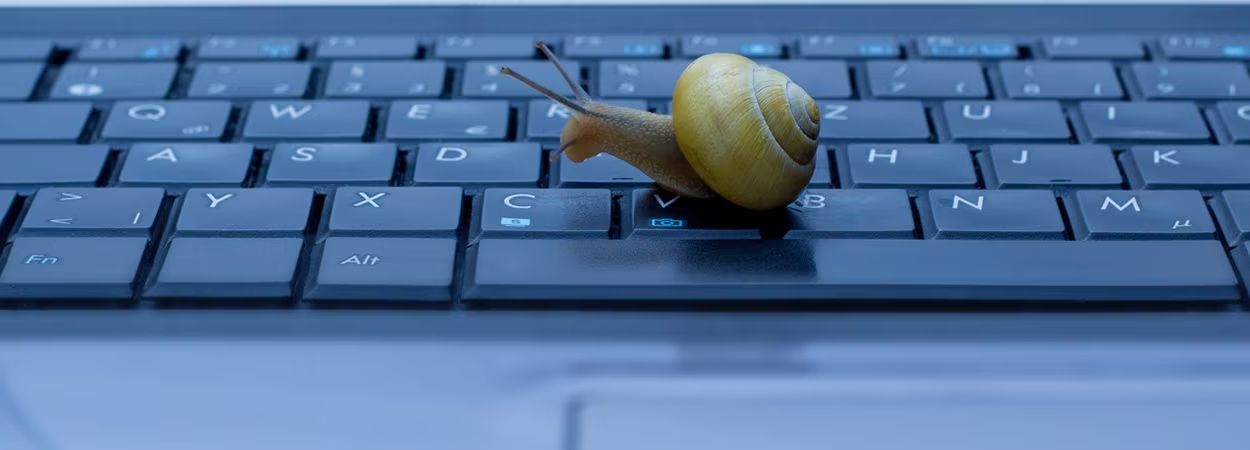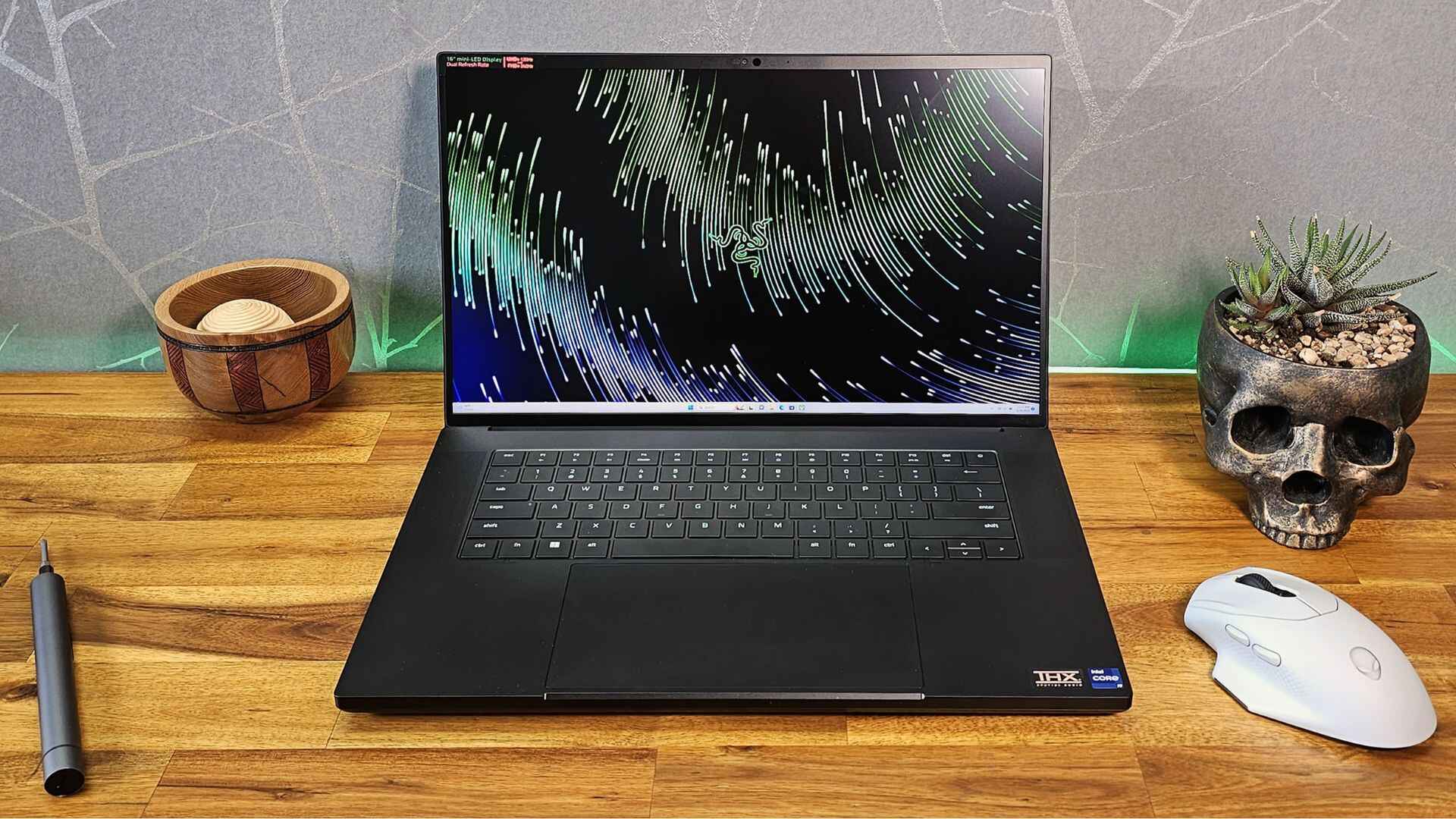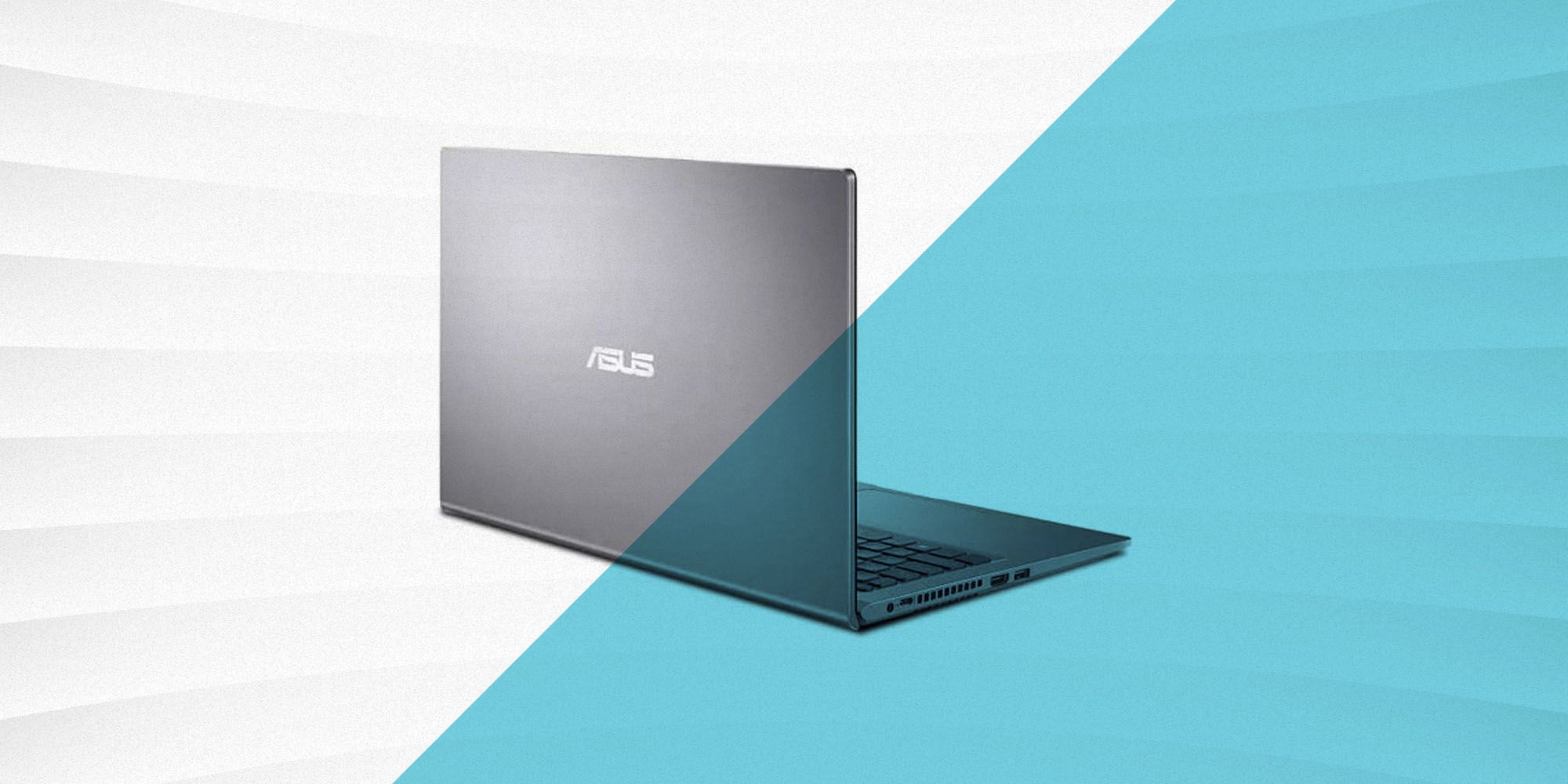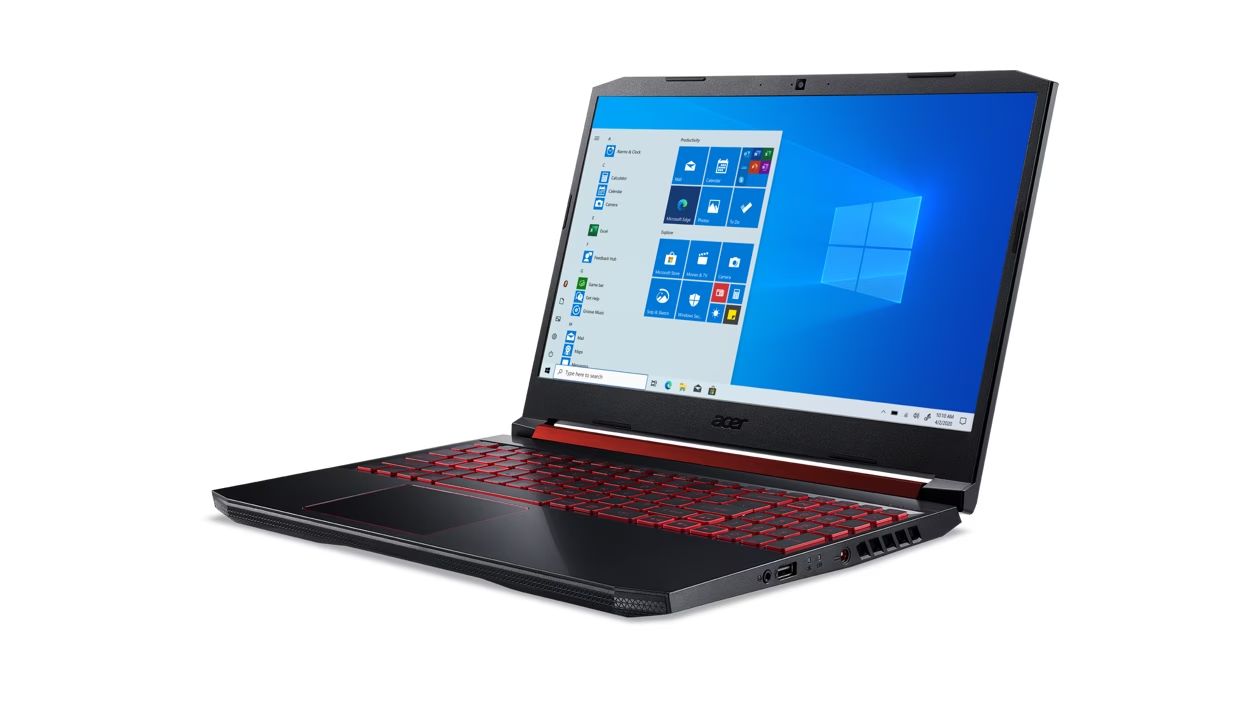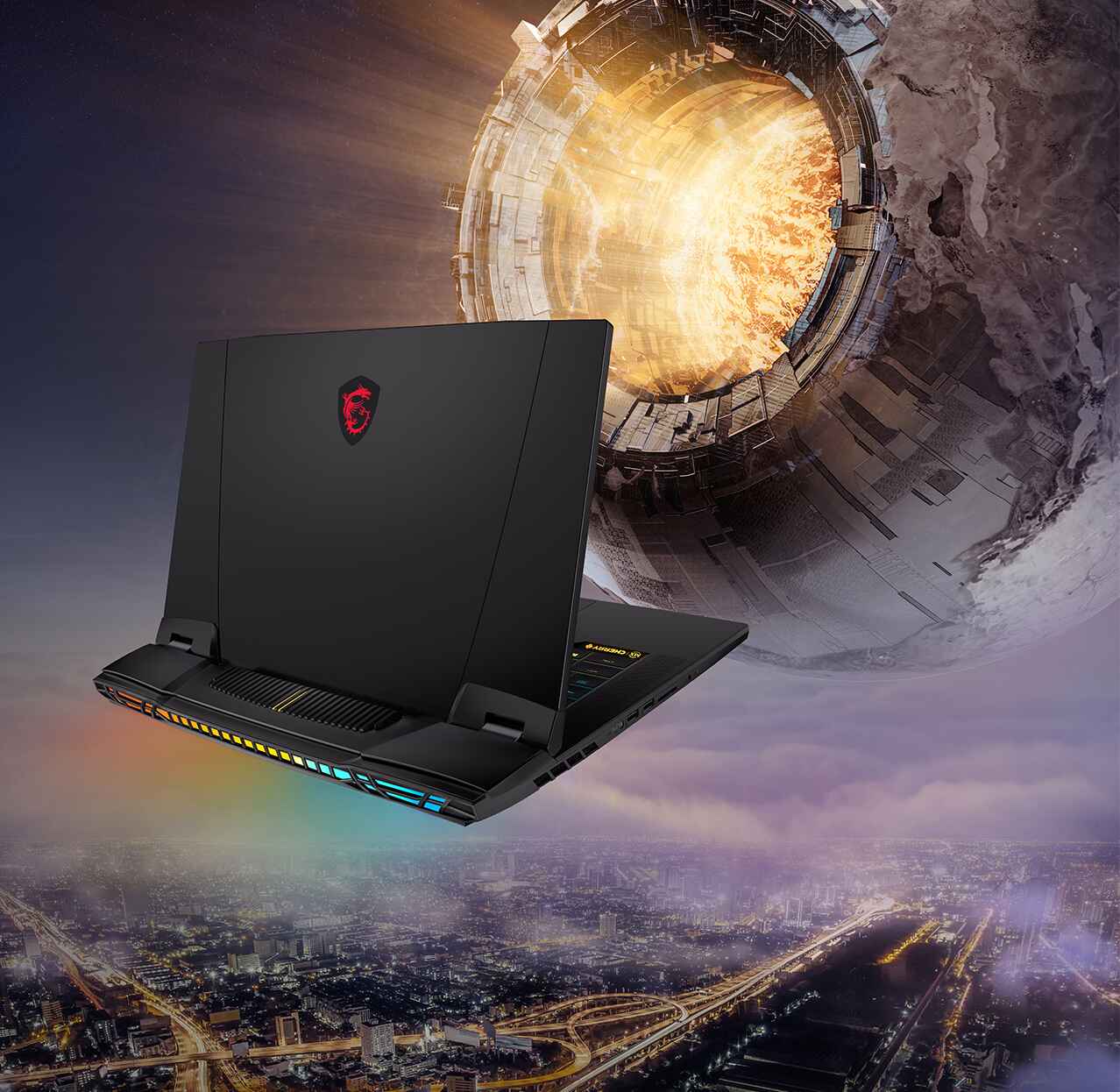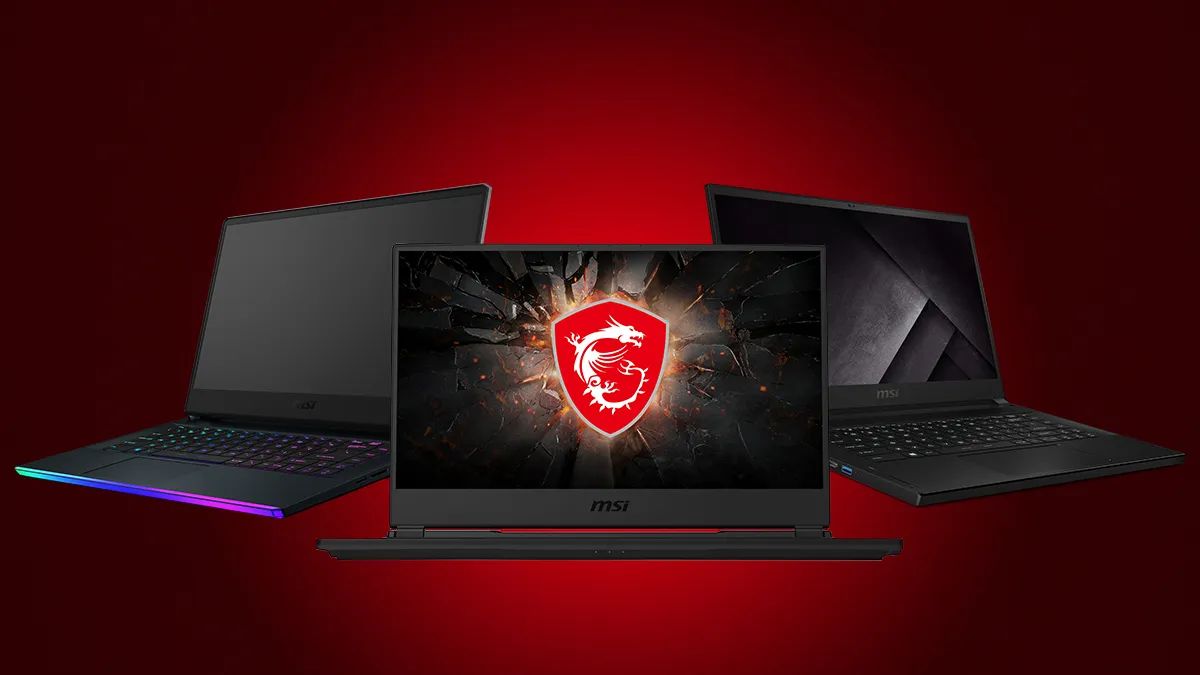Introduction
Welcome to the world of gaming laptops! As a gaming enthusiast, you’ve made a smart choice by investing in a portable powerhouse that allows you to play your favorite games anywhere, anytime. However, to truly maximize your gaming laptop’s performance, there are several factors to consider and steps you can take. This article aims to guide you through the process of optimizing your gaming laptop for the best gaming experience possible.
Gaming laptops are designed to handle the demanding requirements of modern games, but there are still some limitations compared to their desktop counterparts. By following the tips and techniques outlined in this article, you’ll be able to squeeze every drop of performance out of your gaming laptop and ensure smooth gameplay without any frustrating hiccups or lag.
It’s important to note that every gaming laptop is unique, and the specific steps you need to take may vary slightly depending on your hardware and software configuration. However, the principles discussed here are applicable to most gaming laptops and should serve as a solid foundation for optimizing your gaming experience.
Whether you’re a casual gamer or a competitive eSports player, these tips will help you get the most out of your gaming sessions. From choosing the right hardware to managing your laptop’s temperature, we’ll cover everything you need to know to unleash the full potential of your gaming laptop. So, without further ado, let’s dive in and discover how to maximize your gaming laptop performance.
Choose the Right Hardware
When it comes to maximizing your gaming laptop’s performance, selecting the right hardware is crucial. Here are a few key factors to consider:
- Processor: The central processing unit (CPU) is the brain of your laptop and plays a significant role in gaming performance. Opt for a processor with multiple cores and a high clock speed to handle demanding games.
- Graphics Card: The graphics card, or GPU, is responsible for rendering graphics in games. Look for a dedicated GPU with ample VRAM to ensure smooth and immersive visuals.
- RAM: Random-access memory (RAM) impacts multitasking and game loading times. Aim for at least 8GB, but consider upgrading to 16GB or more for optimal performance.
- Storage: Choose between a solid-state drive (SSD) and a hard disk drive (HDD) for storage. An SSD offers faster load times and improved performance, while an HDD provides more storage space at a lower cost.
- Display: A high-resolution display with a fast refresh rate ensures crisp visuals and smooth gameplay. Consider options like an IPS panel for accurate colors and wide viewing angles.
- Battery Life: Gaming laptops are power-hungry, but having good battery life enables you to play without being tethered to a power outlet. Look for laptops with efficient power management features.
It’s essential to strike a balance between performance and budget when choosing your gaming laptop’s hardware. Consider your gaming needs and prioritize the components that will have the most significant impact on your gaming experience. Research and read reviews to make an informed decision and find the best gaming laptop that meets your requirements.
Remember that hardware is just the starting point. To further optimize your gaming laptop’s performance, you’ll need to take other steps, such as software optimizations and regular maintenance. Let’s explore these aspects in the following sections.
Keep Your Laptop Clean and Cool
To ensure optimal performance and prevent overheating, it’s crucial to keep your gaming laptop clean and cool. Here are some ways to achieve this:
- Regularly clean the vents and fans: Dust and debris can accumulate over time and restrict airflow, leading to overheating. Use compressed air or a soft brush to gently clean the vents and fans to remove any buildup.
- Elevate your laptop: Using a laptop cooling pad or simply propping up the laptop on a stand can improve airflow and keep your laptop cooler during intense gaming sessions.
- Avoid blocking the vents: Always ensure that the vents of your laptop are not obstructed. Placing your laptop on a soft surface like a bed or pillow can block the vents, causing the laptop to overheat.
- Use temperature monitoring software: Install software that monitors your laptop’s temperature in real-time. This will allow you to keep an eye on the temperature levels and take appropriate action if it starts to rise too high.
- Apply thermal paste: Over time, the thermal paste between the CPU and the heatsink can dry out or become less effective. Reapplying thermal paste can help improve heat dissipation and lower temperatures.
By keeping your laptop clean and cool, you can prevent thermal throttling and ensure consistent performance during intense gaming sessions. Regular maintenance is key to sustaining your laptop’s longevity and maximizing its gaming capabilities.
In the next section, we’ll explore how you can optimize your graphics settings to strike the perfect balance between performance and visual quality in games.
Optimize Your Graphics Settings
One of the keys to maximizing your gaming laptop’s performance is optimizing your graphics settings in games. By finding the right balance between visual quality and performance, you can ensure smooth gameplay without sacrificing too much in terms of graphics. Here’s how to do it:
- Resolution: Lowering the resolution can significantly improve performance. Experiment with different resolutions to find the highest one that still provides an acceptable visual experience.
- Texture Quality: Lowering the texture quality reduces the strain on your graphics card. Set it to a level where you can still enjoy decent textures without sacrificing too much performance.
- Anti-Aliasing: Anti-aliasing smooths out jagged edges but can be demanding on your GPU. Consider reducing the anti-aliasing settings or turning it off to boost performance.
- Shadows and Lighting: Adjusting shadow and lighting settings can have a significant impact on performance. Lowering these settings can help improve frame rates while still maintaining an immersive gaming experience.
- Effects and Post-processing: Effects like motion blur, depth of field, and ambient occlusion can affect performance. Experiment with these settings to find a balance between visual effects and smooth gameplay.
- Disable V-Sync: V-Sync can limit your frame rate to match your monitor’s refresh rate, but it can introduce input lag. Disabling V-Sync can lead to smoother gameplay, albeit with possible screen tearing.
It’s important to note that different games may have unique graphics settings, so it’s worth taking the time to explore each game’s options and adjust them according to your preferences and hardware capabilities. Additionally, keeping your graphics card drivers up to date is essential for optimal performance and compatibility with the latest games.
In the next section, we’ll discuss the importance of updating your drivers and provide guidance on how to do it effectively.
Update Your Drivers
One of the essential steps in maximizing your gaming laptop’s performance is keeping your drivers up to date. Drivers are software components that enable your hardware to communicate effectively with the operating system and software applications. Outdated drivers can lead to compatibility issues and suboptimal performance. Here’s how to ensure your drivers are up to date:
- Graphics Card Drivers: Visit the website of your graphics card manufacturer (such as NVIDIA or AMD) and download the latest drivers for your specific graphics card model. Install the drivers and follow the instructions provided.
- Chipset and BIOS Drivers: Check your laptop manufacturer’s website for updates to chipset and BIOS drivers. These updates can improve system stability, performance, and compatibility.
- Peripheral Drivers: Update your peripheral device drivers, such as the drivers for your gaming mouse, keyboard, and headset. Visit the respective manufacturer’s website for the latest drivers.
- Automated Driver Update Tools: Consider using driver update tools like Driver Booster or Driver Easy. These tools can automatically scan your system, identify outdated drivers, and download the latest versions for you.
Regularly updating your drivers not only ensures optimal performance but also addresses security vulnerabilities and enhances system stability. Be sure to check for driver updates periodically and keep your gaming laptop up to date.
In the next section, we’ll discuss how disabling any unnecessary background programs can further optimize your gaming laptop’s performance.
Disable Any Unnecessary Background Programs
When it comes to maximizing your gaming laptop’s performance, it’s important to ensure that your system resources are fully dedicated to running the game. Disabling any unnecessary background programs can free up valuable CPU and RAM resources, resulting in improved gaming performance. Here’s how to do it:
- Task Manager: Open the Task Manager by pressing Ctrl + Shift + Esc or right-clicking the taskbar and selecting Task Manager. In the Processes/Details tab, identify any non-essential programs running in the background and end their processes by selecting them and clicking “End Task.”
- Startup Programs: Some programs automatically launch when you start your laptop, consuming system resources. You can manage which programs launch at startup by opening the Task Manager, going to the Startup tab, and disabling any unnecessary programs.
- System Tray Icons: Right-click on the system tray icons (located in the bottom-right corner of the taskbar) and exit any non-essential programs. These programs may include backup utilities, download managers, or instant messaging services that can be paused or closed while gaming.
- Background Services: Access the System Configuration tool by pressing Win + R, typing “msconfig,” and hitting Enter. In the Services tab, you can uncheck services that are not required for gaming. However, exercise caution and research each service to avoid disabling critical system functions.
By disabling unnecessary background programs, you’ll free up system resources and ensure that your gaming laptop can focus its power on running the game smoothly. Remember to restore these programs and services once you’re finished gaming to ensure the proper functioning of your laptop in day-to-day tasks.
In the next section, we’ll discuss the benefits of using a cooling pad or external fan to keep your gaming laptop’s temperature in check.
Use a Cooling Pad or External Fan
Overheating is a common issue when it comes to gaming laptops, as intense gaming sessions can put a significant strain on the system. To prevent overheating and maintain optimal performance, consider using a cooling pad or external fan. Here’s how they can help:
- Cooling Pad: A cooling pad is a specially designed, elevated platform that sits underneath your laptop. It helps improve the airflow around the laptop by providing additional cooling fans and creating space for air circulation. This helps dissipate heat and keeps your laptop cooler during long gaming sessions.
- External Fan: An external fan is another effective option for cooling your gaming laptop. You can place an external fan near the intake vents of your laptop to provide additional airflow and cool down the system. This can be particularly useful if your laptop’s built-in cooling system is inadequate.
Both cooling pads and external fans can significantly reduce your laptop’s temperature, preventing thermal throttling and ensuring consistent performance. Additionally, they can also help extend the lifespan of your laptop by minimizing heat-related damage to internal components.
When selecting a cooling pad or external fan, consider factors such as size, noise level, and effectiveness. Look for models with adjustable fan speeds and ergonomic designs for added convenience and comfort.
In the next section, we’ll discuss the benefits of upgrading your laptop’s RAM and how it can enhance gaming performance.
Upgrade Your RAM
One of the most effective ways to enhance your gaming laptop’s performance is by upgrading its random-access memory (RAM). RAM plays a crucial role in multitasking and gaming performance, as it stores the data that your laptop needs to access quickly. Here’s why upgrading your RAM can make a significant difference:
- Improved Multitasking: Upgrading your RAM allows your laptop to handle multiple tasks simultaneously. This means you can run resource-intensive applications, such as games, while benefiting from smoother performance and reduced lag.
- Faster Loading Times: With more RAM, your laptop can load game assets and textures faster, resulting in shorter loading times. This ensures that you spend more time playing and less time waiting for the game to load.
- Stability and Smooth Gameplay: Insufficient RAM can lead to frequent crashes or frame rate drops during gameplay. Upgrading your RAM provides the necessary headroom for your laptop to handle demanding games without encountering performance issues.
The amount of RAM you need depends on the current configuration and the types of games you play. Aim for a minimum of 8GB for smoother gameplay, but consider upgrading to 16GB or even 32GB if you frequently play AAA titles or engage in content creation tasks.
When upgrading your RAM, ensure compatibility with your laptop’s specifications and choose reputable brands. Consult your laptop’s user manual or manufacturer’s website for guidance on the maximum supported RAM capacity and the type of RAM modules that are compatible.
Upgrading your RAM is a relatively simple process, but if you’re unsure, consider consulting a professional or seeking assistance from a trusted technician.
In the next section, we’ll discuss the importance of managing your storage space and how it can impact your gaming laptop’s performance.
Manage Your Storage Space
Proper management of your gaming laptop’s storage space is vital for maintaining optimal performance. Here are some tips to help you manage your storage effectively:
- Clean up unnecessary files: Regularly go through your files and delete anything you no longer need. Uninstall unused applications and remove large files or folders that are taking up unnecessary space.
- Utilize storage optimization tools: Take advantage of built-in storage optimization tools or third-party software that can help identify and remove duplicate files, cache files, and temporary files that are consuming valuable storage space.
- Move files to external storage: If your gaming laptop has limited internal storage, consider moving non-essential files, such as media files and documents, to an external hard drive or cloud storage. This can free up space on your laptop’s primary storage for game installations and system files.
- Consider upgrading to an SSD: If your gaming laptop is still using a traditional hard disk drive (HDD), consider upgrading to a solid-state drive (SSD). SSDs offer faster read and write speeds, improving overall system performance and reducing game loading times.
By managing your storage space effectively, you can ensure that your gaming laptop has enough room for game installations, updates, and system operations. This not only improves performance but also enhances the longevity of your storage device.
Remember to regularly check your storage status and perform maintenance tasks to keep your gaming laptop running smoothly.
In the next section, we’ll discuss the importance of monitoring your laptop’s temperature and how it can impact your gaming experience.
Monitor Your Laptop’s Temperature
Monitoring your laptop’s temperature is crucial for maintaining optimal performance and preventing overheating. Excessive heat can lead to thermal throttling, decreased performance, and potentially even hardware damage. Here’s why you should regularly monitor your laptop’s temperature:
- Prevent Thermal Throttling: When your laptop’s temperature exceeds a certain threshold, it may automatically reduce the CPU and GPU performance to dissipate heat. Monitoring the temperature allows you to take proactive measures to prevent or minimize thermal throttling.
- Identify Cooling System Issues: Monitoring the temperature can help you identify any potential problems with your laptop’s cooling system. If you notice consistently high temperatures, it may indicate issues such as clogged vents or failing fans that need attention.
- Optimize Cooling Solutions: By monitoring the temperature during gaming sessions, you can determine the effectiveness of your cooling solutions. If temperatures remain too high, you can explore additional cooling options such as cooling pads, external fans, or laptop cooling software.
To monitor your laptop’s temperature, you can use various software applications specifically designed for this purpose. These programs provide real-time temperature readings for your CPU, GPU, and other system components.
It’s important to note that ideal temperature ranges can vary depending on your laptop’s model and specifications. However, as a general guideline, you should aim to keep your CPU and GPU temperatures below 85°C (185°F) during intense gaming sessions to ensure optimal performance and longevity.
Regularly monitoring your laptop’s temperature allows you to take proactive steps to prevent overheating and optimize performance during gaming sessions. It’s a simple yet effective way to ensure the longevity and reliability of your gaming laptop.
In the next section, we’ll discuss the possibility of overclocking your graphics card to squeeze out some extra performance, if your laptop’s hardware allows it.
Overclock Your Graphics Card (if possible)
Overclocking your graphics card can be a way to squeeze out extra performance from your gaming laptop, but it’s important to proceed with caution. Overclocking involves increasing the clock speed and voltage of your graphics card, allowing it to run at higher frequencies than its default settings. Here are some key considerations for overclocking your graphics card:
- Compatibility: Not all gaming laptops and graphics cards are built for overclocking. Ensure that your laptop’s hardware and BIOS support overclocking before attempting any modifications. Consult your laptop’s user manual or manufacturer’s website for guidance.
- Stability and Heat: Overclocking can increase the heat output of your graphics card, potentially leading to higher temperatures and reduced stability. Monitor your laptop’s temperature closely to ensure it remains within safe limits during overclocking.
- Incremental Approach: It’s best to overclock your graphics card incrementally, making small adjustments to clock speeds and testing for stability after each change. This allows you to find the optimal balance between performance and stability without pushing your hardware too far.
- Overclocking Software: Use reputable overclocking software provided by your graphics card manufacturer or third-party tools. These programs allow you to adjust clock speeds and voltages, monitor system performance, and stress test your graphics card to ensure stability.
- Risks and Warranty: Overclocking can void your laptop’s warranty, so proceed at your own risk. Additionally, improper overclocking or excessive voltage increases can potentially damage your graphics card. Take appropriate precautions and research proper overclocking techniques before attempting any modifications.
It’s important to understand that while overclocking can offer performance gains, the actual results may vary depending on your specific hardware. Additionally, the gains may be minimal and not worth the added heat and potential risks, especially if your laptop’s cooling system is already struggling to keep temperatures in check.
If you’re uncertain or uncomfortable with overclocking, it’s best to stick to the default settings of your graphics card. Properly optimizing other aspects of your laptop, such as software settings and hardware maintenance, can still yield significant improvements in gaming performance.
In the next section, we’ll discuss the benefits of using game optimization software to further enhance your gaming laptop’s performance.
Use Game Optimization Software
Game optimization software can be a valuable tool for maximizing your gaming laptop’s performance without requiring extensive technical knowledge. These programs are designed to analyze your system, adjust settings, and optimize performance specifically for individual games. Here are some benefits of using game optimization software:
- Automatic Settings Optimization: Game optimization software automatically detects the games installed on your laptop and suggests optimal settings based on your hardware capabilities. This saves you time and effort in manually adjusting graphics settings for each game.
- Performance Tweaking: These tools can fine-tune various game settings, such as resolution, texture quality, anti-aliasing, and effects, to strike a balance between performance and visual quality. This ensures smooth gameplay without compromising on the overall gaming experience.
- Driver Updates: Game optimization software can also check for and install the latest graphics card drivers, ensuring compatibility and optimal performance for the latest games.
- One-Click Optimization: Some game optimization software offers one-click optimization features that automatically apply the recommended settings for the games on your laptop. This simplifies the process and allows you to quickly get the best performance out of your games.
- Compatibility Testing: These tools often include compatibility testing functionalities that assess your system’s hardware and software for potential conflicts or performance bottlenecks. This helps identify any issues and provides recommendations for resolving them.
There are several game optimization software options available, such as NVIDIA GeForce Experience, AMD Radeon Software, and third-party programs like Razer Cortex and GameGain. Research and try different software to find the one that suits your needs and enhances your gaming experience.
Game optimization software is not a magic solution and may not always yield substantial performance improvements. However, they can be valuable tools, especially for those who prefer a simpler and automated approach to optimize their gaming laptop’s performance.
In the next section, we’ll wrap up our discussion and summarize the key points covered in this article.
Conclusion
Optimizing the performance of your gaming laptop is essential for enjoying a seamless and immersive gaming experience. By following the tips and techniques outlined in this article, you can maximize the capabilities of your gaming laptop and ensure smooth gameplay without any frustrating lag or performance issues.
Choosing the right hardware, such as a powerful processor, dedicated graphics card, and ample RAM, forms the foundation for optimal gaming performance. Keeping your laptop clean and cool by regularly cleaning vents, elevating your laptop, and using cooling pads or external fans is crucial for preventing overheating and maintaining stable temperatures.
Optimizing your graphics settings and updating your drivers are essential steps in fine-tuning your gaming laptop’s performance. Disabling unnecessary background programs and managing your storage space further ensure that system resources are dedicated to running games smoothly.
Monitoring your laptop’s temperature allows you to identify potential issues and prevent thermal throttling, while overclocking your graphics card can provide additional performance gains if your hardware supports it. Lastly, utilizing game optimization software streamlines the process of optimizing your game settings and ensuring compatibility with the latest drivers.
Remember to consider your laptop’s specific specifications, requirements, and limitations when implementing these optimization strategies. It’s essential to strike a balance between performance and the longevity of your gaming laptop.
By implementing the strategies and tips mentioned in this article, you can unlock the full potential of your gaming laptop. Embrace the world of immersive gaming and enjoy seamless gameplay with enhanced performance. Now, it’s time to tackle your favorite games and experience the thrill like never before!







